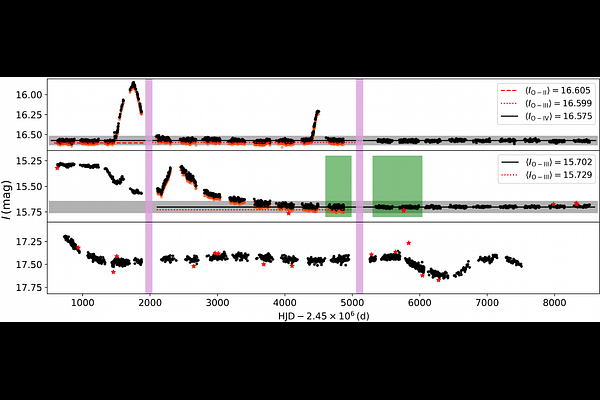Be star demographics: a comprehensive study of thousands of lightcurves in the Magellanic Clouds

Be star demographics: a comprehensive study of thousands of lightcurves in the Magellanic Clouds
A. L. Figueiredo, A. C. Carciofi, J. Labadie-Bartz, M. L. Pinho, T. H. de Amorin, P. T. dos Santos, I. Soszyński, A. Udalski
AbstractMulti-color OGLE survey light curves of about 20 years duration are analyzed for about 3000 classical Be stars in the Large and Small Magellanic Clouds (LMC, SMC) in order to study the properties and variability. Each light curve was manually analyzed to distinguish between different scenarios, such as photospheric baseline levels, and disk build-up and dissipation phases. This analysis was aided by dynamical disk models and photospheric models to coarsely determine inclination angle and mass. Measured quantities such as the fraction of time spent actively ejecting mass (the duty cycle), the fraction of time spent with a detectable disk (the disk duty cycle), the build-up and dissipation time of isolated disk events, and the number of mass outbursts per year allow us to characterize and compare the behavior of the two populations. There is a wide spread in the duty cycle, with median values of 0.44 (LMC) and 0.60 (SMC). The disk duty cycle is high for both populations, with median values of 0.99 (LMC) and 1.0 (SMC), indicating that disks are almost always present for these stars. The occurrence rate of outbursts ranges from zero to about two per year, with median values of 0.31 (LMC) and 0.26 (SMC). There are strong statistical differences in the behavior of the LMC and SMC populations, with the lower metallicity stars being more active in terms of their duty cycle and disk duty cycle, and with less frequent but longer lasting outbursts.